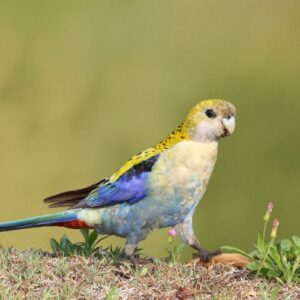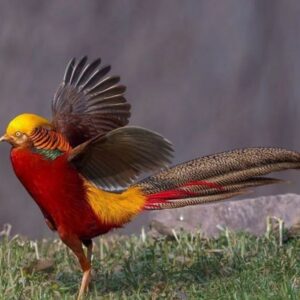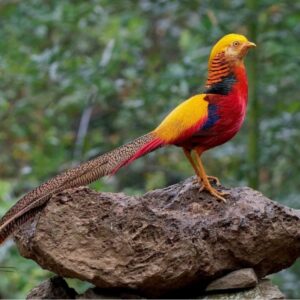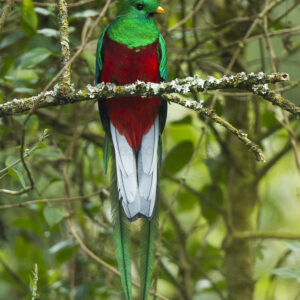A little yet unusual bird species that is native to Brazil is called the Araripe Manakin, or Antilophia bokermanni in scientific terms. This bird treasure, which was just recently discovered, has won the admiration of both experts and bird aficionados. We will dig into the fascinating world of the Araripe Manakin in this article, learning about its special traits, habitat, state of conservation, and the initiatives being taken to safeguard this imperilled species.
Behaviour and look: The Araripe Manakin is renowned for its bright plumage and arresting look. The male has a stunning contrast of fiery red and black feathers, as well as white wing patches and a vivid blue cap on its head. Contrarily, females have a more subdued yet attractive colouring of olive green. Their behaviour is similarly remarkable, with the males performing intricate courtship rituals to entice females, like as acrobatic jumps and wing-snapping noises.

endemism: This species only exists in a limited area in northeastern Brazil known as the Araripe Plateau. The “brejos,” which are damp wooded regions characterised by dense foliage, little streams, and springs, are the specific environment that the Araripe Manakin calls home. These birds may live in the region thanks to the climate’s temperate temperatures and limestone formations.
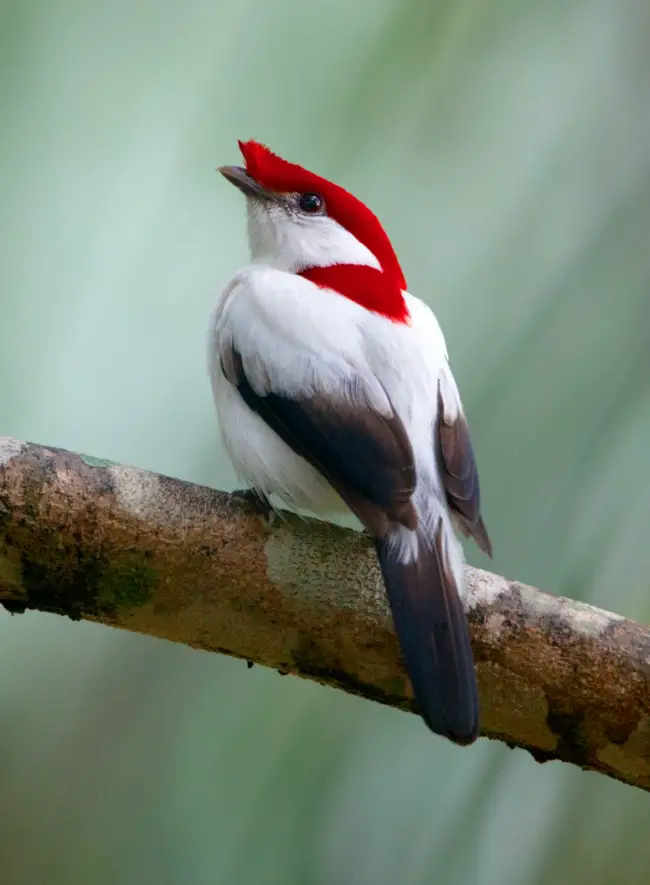
The Araripe Manakin’s endangered conservation status is a result of the multiple dangers it confronts. Habitat loss brought on by deforestation, increased agricultural production, and urbanisation is the main danger. Additionally, exotic species invasion and illicit capture for the pet trade have had an influence on the population. As a result, the Araripe Manakin is now categorised by the International Union for Conservation of Nature (IUCN) as “Critically Endangered,” underscoring the urgent requirement for conservation efforts.

Conservation projects: Several conservation projects have been put into place to protect the Araripe Manakin’s future. These consist of:
a) Protected Areas: By creating protected areas like the Araripe-Apodi National Forest and Araripe-Araripina Environmental Protection Area, the habitat and biodiversity of the bird are intended to be preserved.
b) Research and Monitoring: Ongoing research initiatives keep an eye on the Araripe Manakin’s population dynamics, behaviour, and ecological needs. Important information for planning and decision-making in conservation is provided by these activities.
 c) Education and knowledge: It is crucial to raise knowledge about the value of protecting this unique species among local communities, decision-makers, and the broader public. A sense of guardianship for the Araripe Manakin is fostered via educational programmes, birding excursions, and community participation programmes.
c) Education and knowledge: It is crucial to raise knowledge about the value of protecting this unique species among local communities, decision-makers, and the broader public. A sense of guardianship for the Araripe Manakin is fostered via educational programmes, birding excursions, and community participation programmes.
